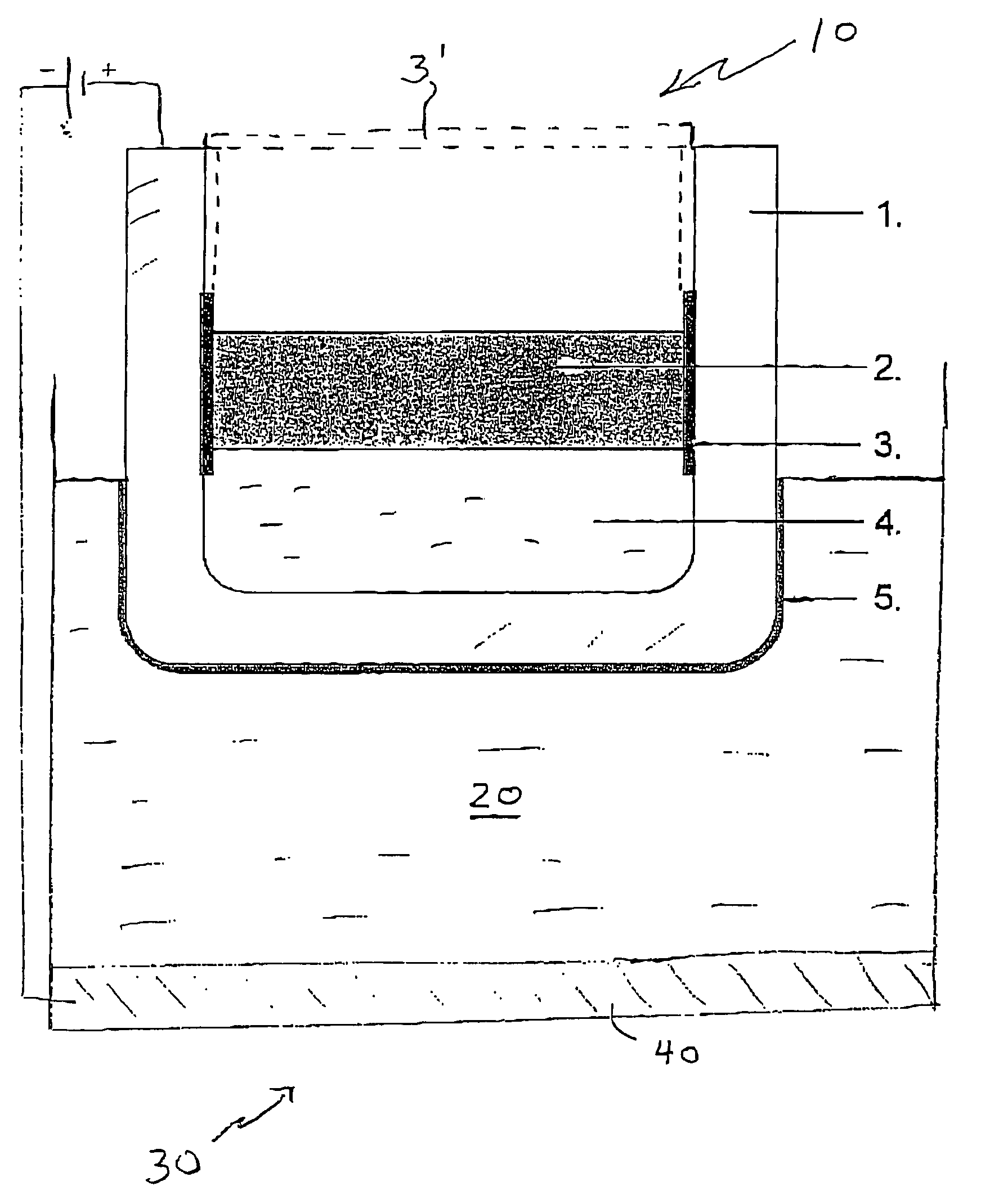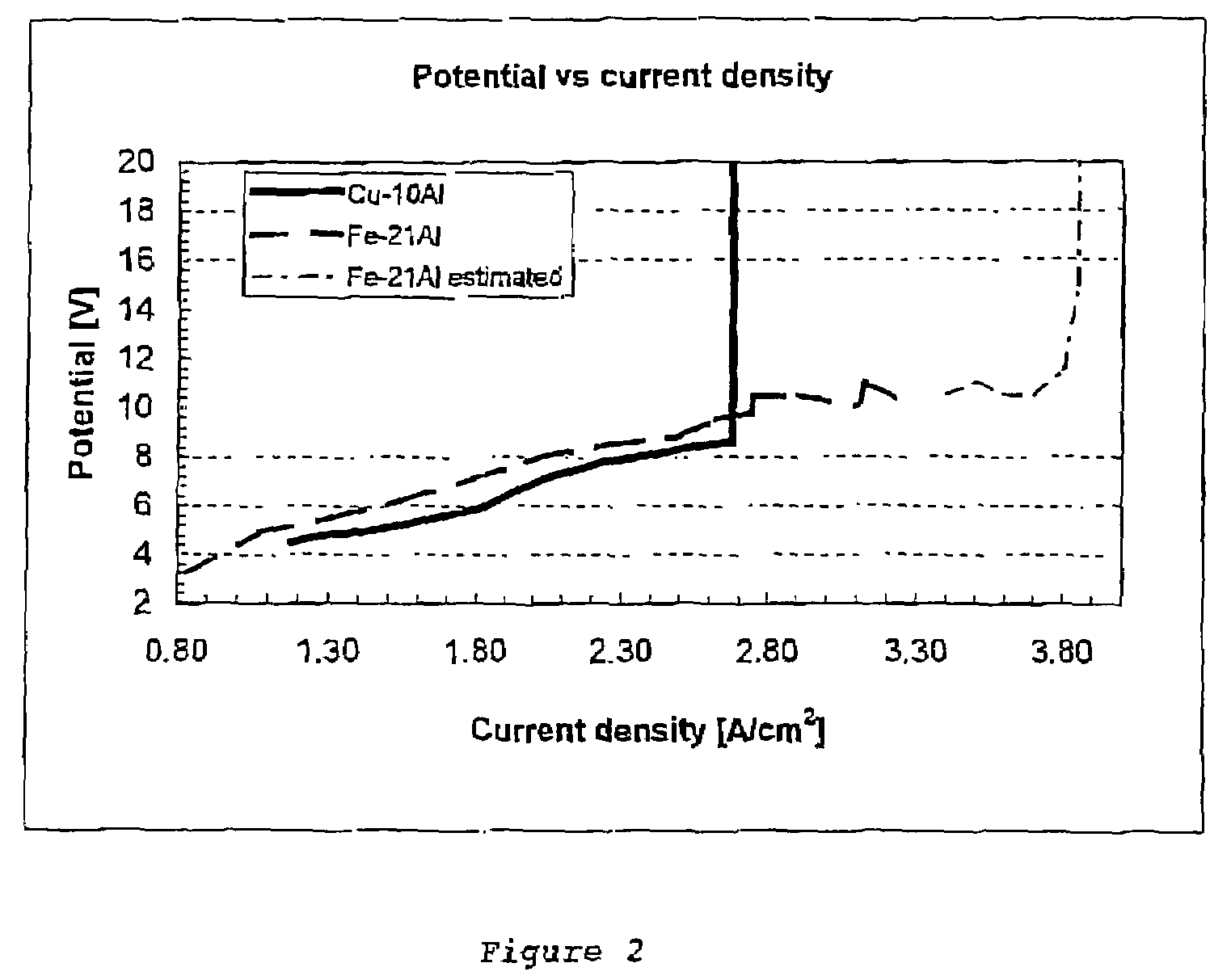Anode for electrolysis of aluminum
an anode and aluminum technology, applied in the direction of electrolysis, separation process, isotope separation, etc., can solve the problems of affecting the operation of the cell, and affecting the production of aluminium
- Summary
- Abstract
- Description
- Claims
- Application Information
AI Technical Summary
Benefits of technology
Problems solved by technology
Method used
Image
Examples
example 1
[0059]This example illustrates the use of a Cu—Al alloy as the container (anode) and the advantage of operating at a high current density.
[0060]Two solid anodes were made of Cu—Al alloy having 10% by weight Al in solid solution. The anode was cylindrical in shape and measured 7 cm in length and had a diameter of 4 cm. Each anode was inserted into a crucible made of carbon and having a cryolite-fluoride bath floating on molten aluminium. The carbon crucible was insulated on the inside with an alsint lining. The molten aluminium layer in the bottom of the carbon crucible acted as a cathode. The bath comprised 76 weight % Na3AlF6, 11 weight % AlF3, 5 weight % CaF2, and 8 weight % Al2O3, (saturated).
[0061]During operation of this experimental cell, alumina was added to keep the concentration near saturation.
[0062]Both anodes were mounted on a stainless steel rod and inserted into the bath to simulate the operating conditions of a cell.
[0063]Both anodes were used in the experimental cell...
PUM
| Property | Measurement | Unit |
|---|---|---|
| temperature | aaaaa | aaaaa |
| temperature | aaaaa | aaaaa |
| melting point | aaaaa | aaaaa |
Abstract
Description
Claims
Application Information
 Login to View More
Login to View More - R&D
- Intellectual Property
- Life Sciences
- Materials
- Tech Scout
- Unparalleled Data Quality
- Higher Quality Content
- 60% Fewer Hallucinations
Browse by: Latest US Patents, China's latest patents, Technical Efficacy Thesaurus, Application Domain, Technology Topic, Popular Technical Reports.
© 2025 PatSnap. All rights reserved.Legal|Privacy policy|Modern Slavery Act Transparency Statement|Sitemap|About US| Contact US: help@patsnap.com



